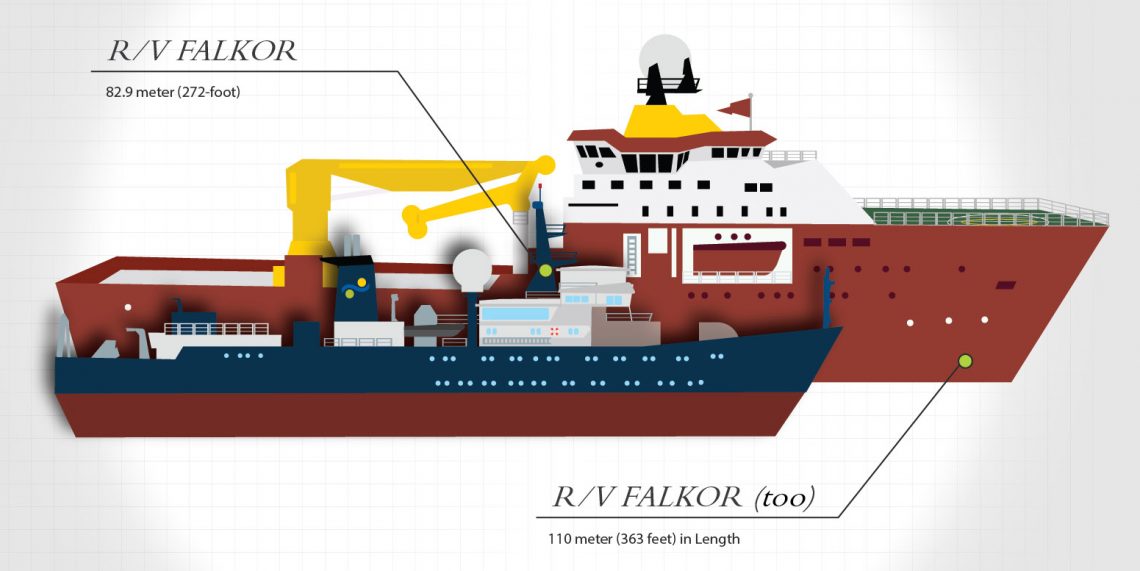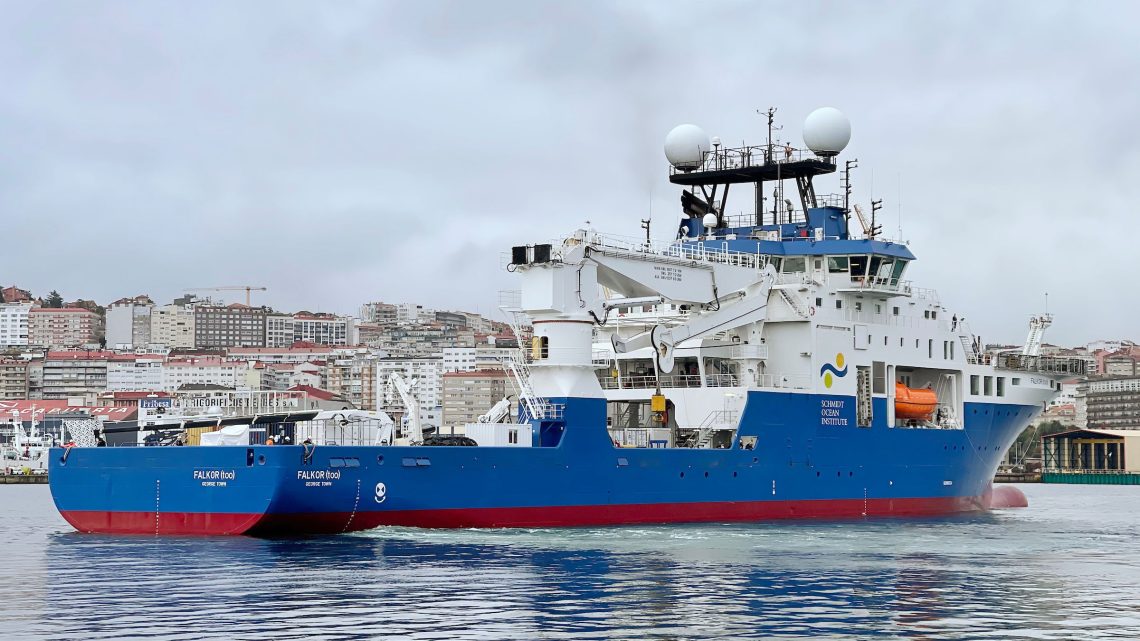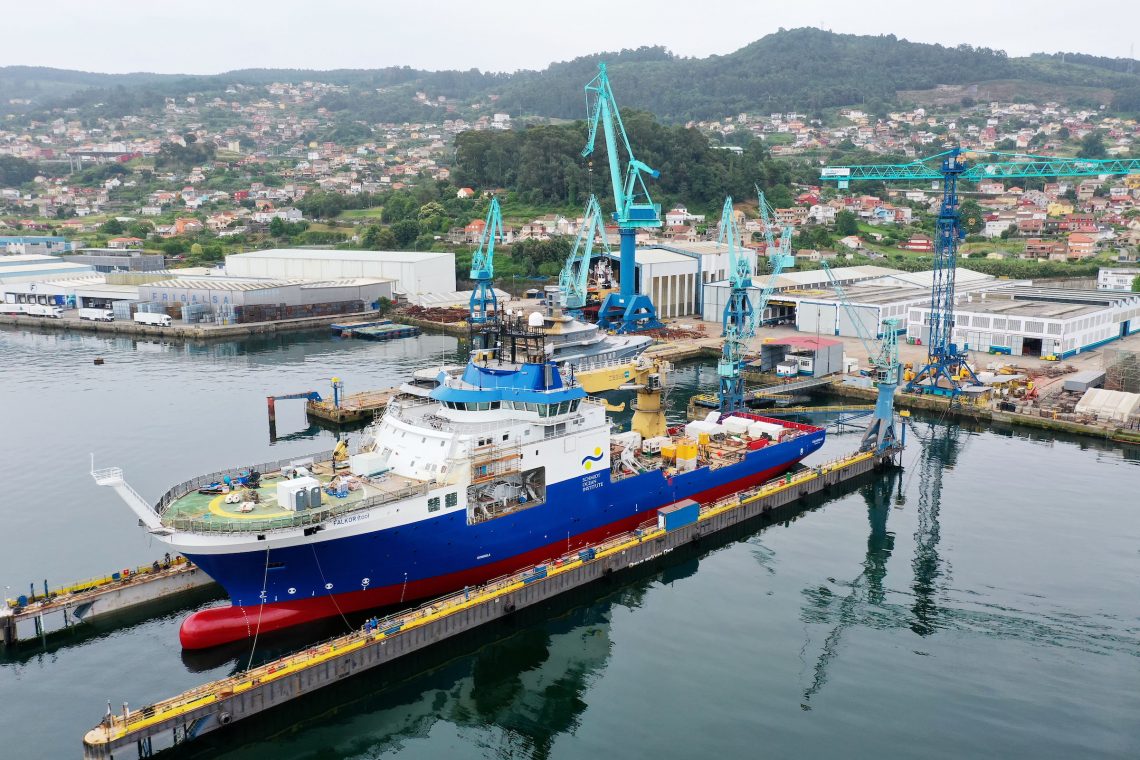SHIP FAQ
1. Why is the vessel named Falkor (too)?
To continue on the theme of the German fantasy novel, The Neverending Story, which served as the inspiration for our first research vessel, this research vessel is named Falkor (too), as it will continue the never-ending journey of the Schmidt Ocean Institute in its mission to explore our vast Ocean ecosystem.
2. How big is this vessel?
Research Vessel Falkor (too) is 110.6 m (363 ft) in length, 20 m (66ft) in beam/width. The aft deck is 960 m2 (10, 333 ft2), and the ship has 70 berths. Comparatively, Falkor is 83 m (272ft) in length, 13 m (43ft) in beam/width, and had 44 berths. You can view all the specifications for the original Falkor here in comparison.
Other “Fast Facts” and statistics about capabilities:
• Eight laboratories, including a 105 sq. meter main lab, wet labs, a science seawater lab, a computer electronics lab, a robotics lab, and a cold lab for biological work
• Three multibeam echosounder arrays – 11 tons of sonars
• 15 other acoustic sensors
• Five km of science seawater piping, plus special system for microplastic water assessment
• Seven over-the-side launch and recovery handling systems for science equipment
• One of the largest cranes on a research vessel
3. What did this vessel do before you bought it?
Falkor (too) was built in 2011 as an offshore industry vessel, and in the last few years it has been used to establish offshore wind farms in Europe.
4. Will you operate two vessels?
Schmidt Ocean Institute is only operating one research vessel, Falkor (too).
5. Why was Falkor replaced?
Although Falkor has been a wonderful vessel, we have outgrown it – both in terms of space for the scientists who wish to join us, and to achieve the ambitious future mission of Schmidt Ocean Institute.
6. What are the additional capabilities of the new vessel?
Falkor (too) has high maneuverability and excellent station-keeping capabilities. The vessel gives SOI greater coverage of the globe and allowing for broader exploration of the ocean. The aft deck is 960 m2 (10,333 ft2), which will give us more space for specialized labs and science equipment. Falkor (too) has been refitted to become a state-of-the-art mobile research facility that offers scientists and innovators from around the world an opportunity to expand their ability to explore and study the ocean. Schmidt Ocean Institute has welcomed more than 1,000 scientists aboard Falkor since 2012 and will increase this capacity with the new vessel.
7. What happened to the first Research Vessel Falkor?
R/V Falkor was donated to Italy’s science agency Consiglio Nazionale delle Ricerche (CNR), expanding the science agency’s fleet of research vessels and continuing Falkor’s legacy of conducting ocean science. The ship will be renamed to Gaia Blu. More information is available here.
8. Where will Falkor (too) sail?
Falkor (too) will be a global vessel that operates around the world. A outline of future years’ sailing schedules can be seen here.
9. How much did Falkor (too) cost?
Falkor (too) is a state-of-the-art research vessel, equipped with the most sophisticated technology currently available. The vessel, its laboratories, tools, equipment, and high-performance computing system are a multi-million-dollar venture. Falkor (too) is intended to be a global research vessel and further demonstrates the commitment of SOI co-founders, Eric and Wendy Schmidt, to provide the global scientific community with state-of-the-art capabilities for ocean research and technology development. As with Falkor, Schmidt Ocean Institute will continue to operate this vessel and offer it at no cost to scientists and technology developers from around the world.
10. Who did you buy this from?
A Norwegian shipping company called GC Rieber Shipping ASA.
11. What was the previous name of this vessel?
The vessel was formerly called Polar Queen.


